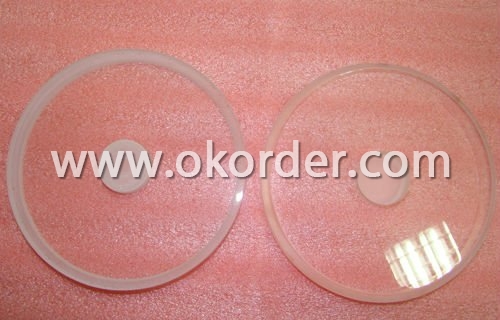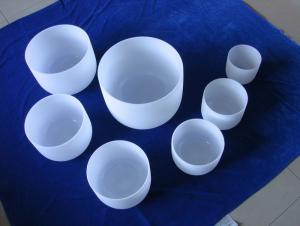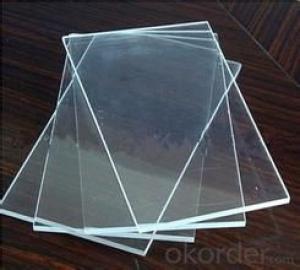Fused Quartz Plate
- Loading Port:
- China Main Port
- Payment Terms:
- TT or LC
- Min Order Qty:
- 1000Pcs pc
- Supply Capability:
- 10000Pcs pc/month
OKorder Service Pledge
OKorder Financial Service
You Might Also Like
Packaging & Delivery of Fused Quartz Plate
Packaging Detail: wafers box, bubble warp, carton, wooden case
Delivery Detail: 5-7days
Specifications of Fused Quartz Plate
Thinkness:1-20mm
Diameter:customized design
Surface Handle:polished, grind
Application:solar energy, semiconductor, etc.
quartz glass plate/quartz plate/quartz sheet
Application of Fused Quartz Plate
1.Material properties
Excellent physical and chemical performance
High Corrosion Resistance
Broad Transmission Spectrum
Working temperature: 1100°C=2012°F
2. Size and shape
Thickness: 0.5-30mm
MAX Size:1000mm×2000mm(square)
If the width is not more than 205mm, the max length we can supply is 3000mm.
Round, Square, Rectangular and Various shapes available.
3. Use
Widely used in Medical, Electronics instrument, Scientific research, Optical industry etc.


- Q: Is spinel a type of Quartz?
- i say make a cool thing with quartz
- Q: Which is more dense? Gold, water, or quartz?
- Given okorder
- Q: can anyone use it?? Im a geminite
- Quartz is often found in veins that cut through rocks. Although the term vein suggests this, the veins of quartz and other minerals are usually not thin tubes, but rather thin sheets. The veins can form under various conditions, and depending on these conditions, may or may not bear quartz crystals in them.
- Q: preferably celtic, but it doesnt really matter.
- Quartz Vs Automatic
- Q: On holiday to the scottish island of Taransay, I climbed to the highest point, Ben Raah. For a momentum i took a piece of quartz from the top. I've been trying to find either a tool or pen suitable to mark it with the date, location etc. Does anyone no what would be most suitable?
- No, the quartz is broken down smaller and smaller until its sand and then a powder and then atomic units. the mineral quartz never changes.
- Q: How can i separation quartz from clay for example kaolin (kaolinite,quartz,...)?
- Take it to your local jeweler and explain your dilemma, I'm sure they will oblige.
- Q: I'm looking for gem stones, and I read that there are quartz crystals that contain silver in them. Does this exist? And where would be a place to look to buy one for personal use in collection.
- If okorder
- Q: I've been doing some hiking in the hills of South Carolina and everywhere I look there are these huge quartz crystal rocks. It is a very rocky area but it seems like this is the norm. There is this creek there that I found where it originates from a underground spring(a big hill with boulders and water comming out of the bottom.) Is it likely that Gold has been moved to the mouth of this spring? And is likely that gold has formed to some of these crystal rocks?
- Granite?
- Q: how much are big quartz crystals worth?
- Go to cosmetics info dot org. for ingredients that is bad for you. I'm not a chemist. I don't know what you're allergic on, and I have no idea about your genes. There are ingredients that are BAD for you, I just don't have that list. There are vitamins that we need, like ZINC, but that's not what they're talking about when it comes to hair products. This product contains aluminum that may be toxic. Aluminum may reach toxic levels with prolonged parenteral administration if kidney function is impaired. Premature neonates are particularly at risk because their kidneys are immature, and they require large amounts of calcium and phosphate solutions, which contain aluminum. Research indicates that patients with impaired kidney function, including premature neonates, who receive parenteral levels of aluminum at greater than 4 to 5 mcg/kg/day accumulate aluminum at levels associated with central nervous system and bone toxicity. Tissue loading may occur at even lower rates of administration. QUARTZ is something you'd find inside a watch. I have no idea. They ARE MEANT TO CLEAN, body washes shampoos. What exactly are you trying to 'achieve'? When you wash your hair with one of those nutrient-rich shampoos, (conditioners or body washes) most of the nutrients and active ingredients in the product don’t actually end up in your hair, they wind up down the drain… along with all the money you spent on the shampoo. It is HOW you use to style your hair or what styling tools that damage the hair, and what chemicals you're adding to the hair, not the shampoo.
- Q: Is it real?Im not sure,could somebody answer this?
- It is a quartz crystal that oscillates with precise timing when a current is applied to it without being affected by temperature, humidity, altitude.
1. Manufacturer Overview
| Location | Jiangsu,China (Mainland) |
| Year Established | 1996 |
| Annual Output Value | US$10 Million - US$50 Million |
| Main Markets | 80.00% Domestic Market 12.00% Eastern Asia 3.00% Eastern Europe 2.00% South America 2.00% North America 1.00% Southeast Asia |
| Company Certifications |
2. Manufacturer Certificates
| a) Certification Name | |
| Range | |
| Reference | |
| Validity Period |
3. Manufacturer Capability
| a) Trade Capacity | |
| Nearest Port | Lianyungang,Qingdao,Shanghai |
| Export Percentage | |
| No.of Employees in Trade Department | 3-5 People |
| Language Spoken: | English, Chinese |
| b) Factory Information | |
| Factory Size: | 10,000-30,000 square meters |
| No. of Production Lines | Above 10 |
| Contract Manufacturing | OEM Service Offered |
| Product Price Range | Average |
Send your message to us
Fused Quartz Plate
- Loading Port:
- China Main Port
- Payment Terms:
- TT or LC
- Min Order Qty:
- 1000Pcs pc
- Supply Capability:
- 10000Pcs pc/month
OKorder Service Pledge
OKorder Financial Service
Similar products
Hot products
Hot Searches

























